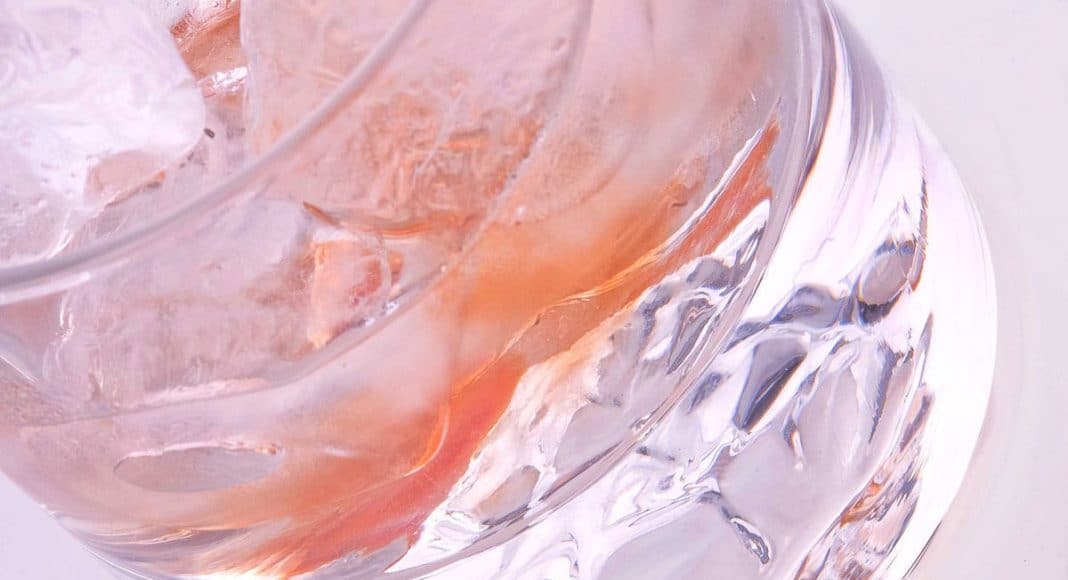Invented by millennials? Yes and no. The original incarnation of the Pink Gin was developed in the mid-1800’s in England and in the Colonies (Princeton University comes to mind) by collegians (millennials) dissatisfied by the flavor of their home-made ‘distilled’ gin. The classic preparation for a pink gin would have involved a heavier variety of gin. In this case it would have been the higher proof (sometimes called Navy strength, which is usually made to be bottled a bit north of 50% abv., or 100 Proof.) Plymouth Gin was a style made popular in Plymouth, England. The very name, Plymouth- is a protected name by provenance alone. No one else can make Plymouth Gin.
https://www.instagram.com/p/BTcA1WpB0YL
Angostura Bitters- the pink component date back to the 1800’s so it’s completely plausible that these healing bitters were added to the high proof (i.e. Navy Strength) gin was originally used to kill an acute belly-ache or lessen the ravages of seasickness while battling the oceans of the earth. This higher proof gin, also known as a Plymouth Gin or a Tom Cat style (like the brilliantly made Barr Hill from Vermont), would have been aged for a period of time in a barrel that may have held some kind of whiskey. This flavor of the strong grain based spirit would have deeply colored the inside of the cask and added deep sweetness from other ingredients like molasses in certain historic versions to the modern day, potent Navy-style gin.
This trend of making pink gin cocktails died out for about a hundred years due to changing tastes. The Pink Gin cocktail magically reappeared during the Roaring Twenties. The period known as the Jazz Era was a high living time during Prohibition. The rage during the 1920’s and 1930’s, involved drinking large quantities of ‘bathtub’ or cheaply made gin mixed into fruity concoctions, created or recreated as it was, to kill the foul taste of the intoxicating liquids.
https://www.instagram.com/p/BX3OxW8noKl
Gin was the cheap and fast drink of the Speakeasy, a place where booze could be bought for a small price and the mixers were always meant to cover up the flavor and scent of the cheap buzz. To hide it from the liquor agents, gin was often stored in a whiskey cask and submerged underwater until the revenuers moved on to easier marks. These used whiskey casks would go only so far to kill foul tasting gin reeking of seawater and odiferous ocean slime. The addition of Angostura Bitters would mask the foul gin and make it somewhat palatable.
The modern craze of drinking high proof, sweetened gin with Angostura Bitters or even cheap red food coloring (because there are no rules in booze), is nothing new. The current micro-trend of drinking a Pink Gin, as exemplified by the millennials in our current period is fun and fancy-free. The current incarnation is in no way, shape or form their invention, not even by name. Subtract about two hundred years and you’re a bit closer to the truth in the invention of the Pink Gin.
https://www.instagram.com/p/BX4L6qGjH2f
The cocktail is never going to be the ethyl alcohol cut, glycerin, sugar and food coloring added science lab experiments that grace the store shelves today. Drinking these mixtures sold in every liquor store in America, makes the imbiber no more intelligent than drinking the myriad of vapid and flat rose wines made from plonk grapes. Each bottle adeptly colored and sugared to please a generation of future diabetics, weaned towards a deeply sweet taste profile. They are solely gimmick liquids- an ethanol infused, sugar and glycerin enhanced-cheap buzz for a generation long accustomed to taking credit for other’s inventions, the facts being just out of reach their peers. Pink Gin? Hardly!
The classic manner of preparing the Pink Gin taught to me according to the brilliant barman Chris James is pretty close to the classic 1800’s methodology. Chris always stresses quality over quantity so pick a quality Plymouth-style gin. And make it one that is light years ahead of the gins of the original era. Chris would fire me if I used cheap, colored and sugared gin to make this potent and historically relevant-hand-held curative.
The classic Pink Gin cocktail is in no way the candy sweet-rose wine-style slurp-favored by the quick to drink, quicker to get drunk set.
The Pink Gin
- 2 large Lemon Zests (wide cut with lots of oil intact. DO NOT USE A PEELER. use a paring knife and no pith, that is very bitter)
- 3 oz. Plymouth Style or Tom Cat Style-Whiskey Barrel Aged Gin
- 1 tsp Angostura Bitters (use what you like, but I always make mine with Angostura)
Rub the inside of a frosty martini glass with the first lemon zest. Pour the Angostura (or your choice) bitters into this pre-chilled glass and roll it around to fully coat the inside of the glass with the aromatic bitters. Chill the gin quickly in a cocktail mixing glass filled with one or two large cubes of ice, turn to chill with a cocktail stirrer, but not to dilute. Pour over the Angostura bitters in the frosty glass. Garnish with the other lemon zest. Serve.


